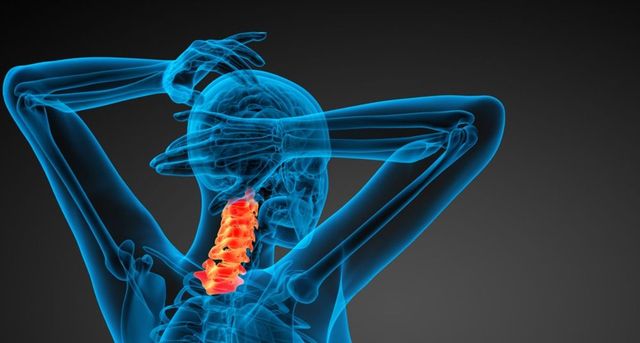Exploring Spinal Decompression Techniques: What You Need to Know for Better Spine Care
Spinal decompression methods are crucial for people experiencing chronic pain in the back or spinal issues. These techniques vary from non-invasive treatments to medical options, each made to eliminate pressure on the spinal column. Recognizing these methods is necessary for effective back care. Nonetheless, not all methods are ideal for every problem. The subtleties behind each method warrant better examination, as they can greatly influence healing and total health outcomes. What elements should one take into consideration prior to making a choice?
Understanding Spinal Decompression
Spinal decompression may sound complex, it essentially refers to a range of methods intended at minimizing stress on the spinal cable and surrounding nerves. The back is a vital framework that supports the body and safeguards vital neurological paths. When compression happens, it can bring about pain, discomfort, and reduced movement. Understanding spinal decompression includes recognizing the root causes of this pressure, such as herniated discs, spinal stenosis, or injury. By resolving these underlying issues, decompression strategies look for to bring back appropriate alignment and feature. This procedure can include both surgical and non-surgical approaches, tailored to specific client needs. The goal is to improve the high quality of life by eliminating pain, improving posture, and facilitating far better motion. As understanding of spinal wellness expands, the relevance of recognizing spinal decompression comes to be progressively appropriate for those looking for efficient treatment alternatives
Typical Spinal Decompression Techniques
Spinal decompression strategies include a series of approaches developed to alleviate stress on the spine and its associated frameworks. These techniques can be broadly categorized right into non-surgical and medical methods. Non-surgical approaches consist of spinal traction, where mild drawing forces are used to the spine, producing space between vertebrae. This can minimize nerve compression and advertise healing. Chiropractic adjustments likewise drop under this classification, concentrating on realigning the spinal column to improve feature.
Surgical decompression techniques involve procedures such as laminectomy, where a part of the vertebra is gotten rid of to ease stress on the spine or nerves. Discectomy, an additional medical option, involves the elimination of herniated disc material. Additionally, minimally intrusive techniques, like endoscopic discectomy, are getting popularity because of their minimized recuperation times. Each technique serves a particular objective and might be selected based upon specific patient needs and the intensity of their spinal problem.
Advantages of Spinal Decompression
When considering the various methods to taking care of spinal problems, the advantages of spinal decompression techniques end up being apparent. These methods intend to alleviate pressure on the spinal discs and nerves, which can reduce discomfort and enhance general spinal health. By producing space in between vertebrae, decompression promotes boosted blood flow and nutrient circulation to the impacted locations, helping with healing and healing.
Furthermore, spinal decompression can aid restore the natural positioning of the spinal column, potentially reducing the danger of future injuries. Individuals commonly report boosted mobility and flexibility following treatment, bring about an enhanced lifestyle. The reduction in pressure can decrease signs and symptoms connected with conditions such as herniated discs, sciatica, and spinal stenosis, supplying a non-invasive option to more intrusive procedures. Overall, spinal decompression techniques supply an array of restorative and physical benefits, making them an important part of considerable spinal column care.

Who Can Take Advantage Of Spinal Decompression?
People suffering from persistent neck and back pain, herniated discs, or spinal constriction may locate significant alleviation through spinal decompression techniques. This non-invasive therapy can be particularly helpful for those experiencing nerve compression symptoms, such as tingling, feeling numb, or weak point in the arm or legs. Athletes recovering from injuries or individuals with degenerative disc condition may additionally think about spinal decompression as a viable choice for pain administration and boosted wheelchair.
Furthermore, prospects for spinal decompression often consist of those who have not reacted well to standard treatments, such as drugs or physical therapy. It can also work as an option for people looking for to avoid surgical treatment. Generally, spinal decompression methods can supply a restorative choice for numerous individuals encountering spinal concerns, helping them reclaim a better of life and practical ability. Consulting a healthcare specialist is important to figure out the viability of this treatment for specific conditions.
Factors to consider and Safety Measures for Spinal Decompression

The sort of spinal decompression method-- whether medical or non-surgical-- must align with the person's specific problem and general wellness condition. Surveillance during the procedure is essential to address any type of adverse reactions promptly. Clients have to also comprehend Chiropractor that spinal decompression is not a one-size-fits-all remedy; an extensive therapy strategy may include physical therapy or way of living changes to sustain recovery. In general, sticking to these safety measures can greatly enhance the efficacy of spinal decompression therapies and advertise ideal spine health and wellness.

Regularly Asked Inquiries
How much time Does a Typical Spinal Decompression Session Last?
A typical spinal decompression session lasts between 30 to 45 minutes. This duration allows for perfect treatment while making sure the person continues to be comfy and obtains appropriate interest to their particular spinal problems and needs.
Can Spinal Decompression Be Done at Home?
Spinal decompression can be performed at home through certain exercises and tools, such as inversion tables or back dental braces. Assessment with a healthcare specialist is suggested to ensure safety and performance in private situations.
Is Spinal Decompression Painful?
Spinal decompression is generally not painful; nevertheless, individuals may experience mild pain or pressure throughout the procedure. Pain degrees can differ based upon the person's condition and the technique used for decompression.
Exactly How Several Sessions Are Normally Needed for Relief?
Commonly, people may need 6 to 10 sessions of spinal decompression therapy to experience considerable alleviation (Top Chiropractor). The specific number can vary based on individual conditions and actions to treatment, requiring individualized evaluation by health care professionals.
Are There Any Type Of Age Limitations for Spinal Decompression?
There are usually no rigorous age restrictions for spinal decompression therapy. Nevertheless, suitability might depend upon specific health and wellness problems and the specific technique used, so appointment with a health care professional is recommended for personalized advice.
Spinal decompression methods are essential for people experiencing persistent back pain or spinal issues. Spinal decompression may appear facility, it essentially refers to a range of techniques intended at relieving pressure on the spinal cord and surrounding nerves. When taking into consideration the different techniques to managing spinal concerns, the advantages of spinal decompression techniques come to be obvious. Individuals suffering from chronic back pain, herniated discs, or spinal constriction may find substantial alleviation with spinal decompression techniques. In general, spinal decompression techniques can provide a healing alternative for numerous individuals dealing with spinal problems, helping them reclaim a higher top quality of life and practical capacity.